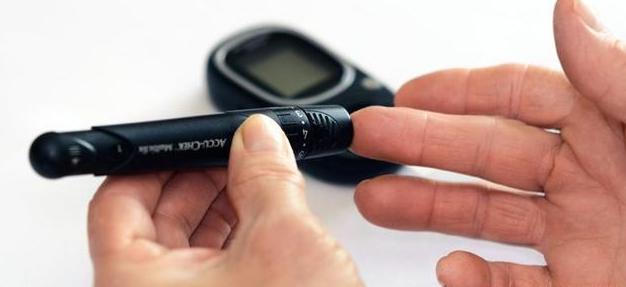Today we talk about how exercise can help with diabetes. Diabetes may seem like a non-issue, but at one time or another you hear about it. Diabetes is just one of many chronic diseases that millions of people suffer from each year, and tens of thousands have been diagnosed with the disease. Whether you have type 1 or type 2 diabetes, managing your exercise, diet and mental health and making healthy lifestyle choices are essential to avoid this dangerous disease.
Therefore, we will focus on exercise health for people with diabetes, as it is a key component. We will also briefly cover diet and mental exercise (meditation, etc.) as these factors all play a huge role in overall well-being.

What is diabetes?
Diabetes is a disease that affects the body's blood sugar levels and it is caused by high blood sugar levels. Glucose comes from the food we consume, supplies the body, and is then formed into energy in the body with the help of insulin, which is secreted by the pancreas.
However, if this metabolic process may not be able to break down glucose efficiently due to factors such as lifestyle habits or even a genetic condition in the family, then diabetes can lead to many problems affecting the heart, kidneys, and nerves.

What is the difference between type 1 and type 2 diabetes?
Diabetes is divided into type 1 and type 2, with the former being more severe and the latter being the most commonly encountered form of diabetes. Over 90% of people with diabetes have type 2 diabetes.
Type 1 diabetes means that the body no longer produces insulin and occurs more often in children and young adults. This is due to the immune system attacking the insulin-producing pancreatic cells. Therefore, this type of diabetes needs to be treated every day. About 10% of people with diabetes have type 1 diabetes.
Type 2 diabetes means that the body does not use insulin effectively, or that it does not produce enough insulin. This condition is more common in middle-aged and older adults, but others can develop it as well.
Countless studies have proven the positive effects of exercise on the prevention and treatment of diabetes and insulin resistance. However, the impact of exercise is even more prominent when it comes to making healthy lifestyle choices.

How can exercise help with diabetes? Let's talk about how exercise can help control and improve diabetes.
It reduces stress
Stress affects everyone, and as we live in a fast-paced society with irregular diets and high expectations, our bodies experience so much discomfort.
Stress causes an excessive release of hormones such as adrenaline and cortisol, which can lead to health and disease when these hormone levels are consistently excessive in the body. It also has a direct correlation to elevated blood sugar levels, which can exacerbate the problem.
So, stress management is a must for your overall health. Exercise is a very necessary option in stress management because it not only helps to control the disease, but it also delays it and even helps to improve it.
Exercise releases feel-good chemicals in the brain called endorphins, which directly affect mood and distract people from many of the typical stressors in life. It also strengthens the heart, potentially lowering blood pressure and giving you more confidence.
Short-term stress is normal, but long-term stress can be deadly.

Exercise is important for weight management
Overweight and obese people are at a higher risk of developing type 2 diabetes due to their physical condition.
What has been studied in diabetes prevention and pre-diabetes is that moderate weight loss can greatly reduce the risk of developing the disease. When you lose 7% of your body weight, the risk of developing diabetes is reduced by 60%. And, in fact, if you are over the age of 65, this reduction rate exceeds 70%.
As you can see, exercise is a must, especially if you are overweight. You need to eat lots of dark leafy greens, a small amount of meat, whole grains, healthy fats, good quality carbohydrates, and some fruit. However, greens should make up the majority of your diet, while complex carbohydrate, fruit, and fat intake should be reduced. You should avoid any processed, refined, high glycemic index foods. Certain fats (saturated and trans fats) and even sodium should be lowered in your intake.

Exercise can reduce the effects of unhealthy nutritional habits
Sometimes a healthy diet can be a difficult thing to maintain, and tasty treats are often detrimental to healthy nutrition. But the good news is that in an era of processed and fast food, exercise can mitigate the health effects of a poor diet. One important reason is that it can prevent the chronic symptoms associated with certain diseases. But don't think you just eat randomly and then exercise, and that's okay, because that doesn't work very well either.

Exercise can improve your mental health
A diagnosis of diabetes or another chronic disease can be frustrating, and it can definitely have some impact on a person's mental health. In fact, people with diabetes can be at increased risk for depression, anxiety and even eating disorders. This adds an additional burden to the daily treatment plan, which is the real challenge for these individuals.
However, the disease itself can also lead to the mental problems mentioned above due to potential fluctuations in blood sugar levels; when all of these factors are added together, they can lead to a condition known as diabetic psychological distress. Many people will feel that it is useless to do anything to improve the situation due to the despair and helplessness they feel. As a result, mental health deteriorates after this thought process. Exercise is just as important for you to improve your mental health as it is for your physical health.

Exercise is the prescription for this disease. That's why doing some aerobic and/or anaerobic exercise every day is essential to maintaining your health and well-being. A 12-week study found that regular aerobic exercise had a significant positive impact on self-esteem and mental health, which was directly linked to improved quality of life.
So, no matter what kind of exercise you choose, it's important to always keep it up. Strength training, jogging, exercise, pure aerobic exercise...these are all excellent choices. According to studies, all exercises, whether aerobic, anaerobic or a combination of training, help raise glycated hemoglobin values.
But don't forget the mental exercise approach to mental health management; such as meditation, psychotherapy, etc. Without these, you may still struggle. Talking to people and implementing a cognitive program will have a very big impact on your mental health.
Meditation allows you to focus on the present moment and healing, rather than getting stuck in your problems. This is what many people do to fight depression, improve their immune system and increase their cognitive abilities.

How much exercise should a person with diabetes do?
It can vary significantly from person to person depending on current physical condition. If you haven't exercised in a while, start slowly and avoid overexertion. If you have been exercising lightly, then increase the intensity little by little.
If you really like working out, great! Remember, it's a powerful weapon in the fight against diabetes.
Those who are sedentary are advised to start with a walk. But this is a way to promote relaxation. For example, listen to a calming audiobook or take a walk with a loved one in your favorite place.
For those who have experienced exercise, 30 minutes a day is enough. In addition, strength training should be a part of your life, at least twice a week, to stay strong and manage blood sugar levels.
However, never overexert yourself and be sure to pair it with a healthy carbohydrate food, such as some fruit or a healthy snack, to prevent your blood sugar levels from dropping too low.
Always consult your doctor before doing any exercise to make sure the whole process goes smoothly and that your body is safe.

Exercise process for people with diabetes
The type of movements you do are no different than someone without diabetes. Do some fun moves to keep your inspiration up to date with your exercise. But do your best, don't overdo it, and stop when you feel tired.
Since strength training is so good for staying healthy, we've put together some training plans that you can stick with for at least a month before changing your training.
Before doing the training sets below, be sure to warm up a few sets with lighter weights and not larger weights (that's why we chose a medium range of reps). But you should still train with moderate intensity.

Here's an example of a strength training workout, including schedule and movements...you can make adjustments to suit your body's needs.
Monday.
Dumbbell Arrow Squats (3 sets x 15 reps)
Single arm/single leg Romanian hard pulls (3 sets x 12 reps)
Dumbbell lateral planks (3 sets x 12 reps)
Dumbbell seated shoulder press (3 sets x 12 reps)
Aerobic exercise for 20 minutes

Tuesday.
Upper incline dumbbell bench press (4 sets x 15 reps)
Chest/apparatus flyes (3 x 15 reps)
Triceps rope pull-down (3 sets x 20 reps)
Recumbent curl bar triceps extensions (2 sets x 12-15 reps)
Aerobic exercise 20 minutes

Wednesday.
Seated rope rowing (4 sets x 12-15 reps)
Standing High Rope Row (3 sets x 15 reps)
Standing alternating dumbbell curls (3 sets x 12 reps)
Dumbbell hammer curls (3 sets x 12 reps)
Aerobic exercise 20 minutes

Thursday.
Rest day: 30 minutes of moderate intensity cardio or brisk walking.
Friday.
Self-weight squats (4 sets x 20 reps)
Lying leg curls (4 sets x 15 reps)
Dumbbell prone side planks (3 sets x 12 reps per exercise)
Aerobic exercise for 20 minutes

Saturday.
Push-ups (4 sets x 15 reps or as many as possible)
Chest/apparatus flyes (2 sets x 12 reps)
Dumbbell Prone Row (3 sets x 15 reps)
Single-arm lat pull-down (3 sets x 10-12 reps)
Triceps arm curls (4 sets x 12 reps)
Barbell curls (4 sets x 12 reps)
Aerobic exercise 20 minutes

Sunday.
Rest day: 30 minutes of moderate intensity cardio or brisk walking.
Repeat this routine on Monday.
You can train your core 3-4 days a week by doing 3 plank supports, lying side leg raises, and let the training start simple.
When is the best time to exercise?
At least one to three hours after a meal, your blood sugar levels may be relatively high.
However, if you take insulin, be sure to check your blood sugar levels before and after exercising. If your blood sugar level is below 100 mg/dL, eat something to raise it or you are likely to risk hypoglycemia.
If your blood sugar level is over 250, then don't exercise for a while, as this may make your body worse.
Also, check your blood sugar level before any movement to make sure it is in a healthy range to avoid hypoglycemia.

Exercise is an important part of improving your diabetes.
You don't need to work very hard, but if you take all the precautions beforehand, you can certainly increase the intensity of your training without worrying about overtraining. Diabetes may inconvenience you in many ways, but that doesn't mean you can't live your life the way you want to.
Making daily exercise a priority option will allow you to avoid many of the potential negative effects and symptoms. So, get into the training flow and take control of your body's condition.
Exercise is a way to promote, and maintain, optimal levels of physical and mental health, whether you have diabetes or not.
But don't forget how important diet and mental exercise (meditation, therapy, etc.) are in a better health lifestyle, as every preventative approach should meet the required standards.
Popular Articles
-
Fitness Equipment | How to choose a suitable for their own yoga mat?

-

Photos
The world's most beautiful big cities at nightJul 01, 2025
-
 These pieces of home goodies, home essential artifacts, has been using a straight cool, home happiness burst
These pieces of home goodies, home essential artifacts, has been using a straight cool, home happiness burstJul 01, 2025
-

Photos
Keep your power sockets and air conditioner remote control well storedJul 01, 2025
-
 The world's most dinosaur-like lizards: Armadillo ring-tailed lizards
The world's most dinosaur-like lizards: Armadillo ring-tailed lizardsJul 01, 2025
-
 These are the top 4 causes of sunken nails to watch out for!
These are the top 4 causes of sunken nails to watch out for!Jul 01, 2025







Comments
0